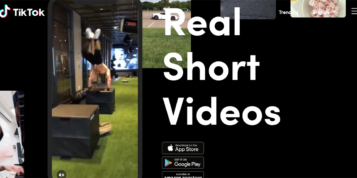The rise of the internet and now social networks has fundamentally shifted the way we communicate, buy and work. This is not a fad that is going away, the internet is now increasingly central to our lives and social media represents 20% of our internet time. YouTube now claims a billion unique users every single month, meaning that nearly one out of every two people on the Internet is visiting the site.
For brands, social media is no longer optional, as customers are asking for it, competitors are using it and it is an important service that provides relationship building opportunities. This also means the way we engage is evolving. Engagement 3.0 is here, and it is about brands giving their online interactions an offline element, and not necessarily about making money.
People are on the social web to engage with their peers, talk about themselves and often enhance their social status. Social networks are a space defined by customers, where the customer is in control. It is built on a two-way conversation where the message is constantly being updated.
Social media is also allowing individuals to interact on a scale never seen before. These online communities, however, increasingly want to express their online messages offline. This means savvy brands increasingly have to find new ways to engage with their fans. A trend we are witnessing at Spreadshirt is that brands could learn from YouTubers.
Leading the way:
YouTube since its inception nearly a decade ago has been one of many social media channels that allows anyone with passion and purpose to express, display and spread their ideas. With more than four billion views per day, YouTube is now the third most visited site with 60 hours of video uploaded every minute. The platform allows for users to upload and view videos but also comment, rate and respond on the site. With more than 50% of videos being rated and commented by users.
More than traditional brands, YouTubers understand the challenges of the online social world and are finding innovative ways to engage with their viewers, spread their message, extend their marketing scope and at the same time communicate with fans in a more personal interactive manner.
What we have found at Spreadshirt is that for them offering a way to make your own t-shirt online has become a viral marketing tool of choice. Print-on-demand technology is facilitating these burgeoning businesses to convert their online video messages into offline clothing and is changing traditional engagement models.
YouTubers, mostly young people, like the fact that an online shop can be very low risk as there’s no inventory needed. They use the shop to support their videos and ideas for designs often come from the video stories they are working on, or even viewer comments – so there’s a constant flow of ideas between them and their fans.
It is about a creative process where they wear the shirt in one of their clips or have their viewers decide which design will be in the shop next. It’s subtle however, not a hard sell. For example, they post a new video of them wearing their new design and link from video to shop – direct. They make the design look good first, wait till there’s some interest and then announce it’s available to buy. White label shops also means that the customised merchandise is an extension of the YouTubers’ brand.
A couple at the top of their game in the UK:
- Yogscast
http://www.youtube.com/user/bluexephos
- Tobuscus
http://www.youtube.com/user/Tobuscus
Successful YouTubers manage their shop and the marketing effectively and are particularly good at using customisable merchandising to best effect: They don’t load up their shops with designs all at once, but instead keep it topical and offer limited editions This means they can continue the engagement with their fans. They also use other social media to maintain interest and momentum. The rise of Facebook, Twitter and other social networks has also accelerated the growth of YouTube as it enables discovery and sharing of online video.
It is no surprise then that YouTubers are one of our fastest growing sectors and therefore a big revenue channel. The average conversion rate is 2% which is higher than most shops and certainly better than the results from Facebook-commerce. And while for many it is about engaging with their viewers some are making some serious money. The very top sellers can sell 200 a day, with $5 commission, so $1000 a day!
By converting their marketing ideas into customisable clothing that can be readily available to buy via multiple channels, these budding social media entrepreneurs are changing the relationship with their customers by connecting online as well as offline and they are showing us that social e-commerce can work if done correctly. Engagement has evolved and can be seen on a YouTube channel near you.





